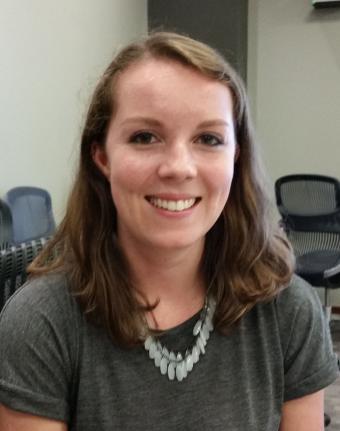“Most of this is magical recipes with talismanic properties,” she said. “A lot of its contents are focused on instructions for how to achieve this talismanic protection or to deliver this spell or practice this divination.”
Lamb, a rising senior from Portland, Ore., has learned Arabic at Brown. Before she could begin to translate the manuscript or interpret its cryptic illustrations, she had to figure out what order the pages might have and whether they composed many texts or just one. To do that, she looked not only at the words and their meanings — the unusual script and the author’s quirky handwriting have made that challenging — but also at stains on the pages and patterns of ink drops.
What has made many of these intensive examinations and manipulations possible with such precious papers, Lamb said, has been that it’s a digital project. In Brown’s Digital Scholarship Lab Lamb has been able to zoom in on the detailed scans of every page on a high-resolution display wall. Pages can be viewed together for comparison and shuffled around with a few flicks or clicks of a mouse.
“This program is Adobe Photoshop Lightroom, which is commonly used by wedding photographers.” she said. “It happens to be really useful for reordering our Timbuktu manuscript.”
Lamb, an international relations concentrator with a focus on the Middle East and North Africa, knew she wanted to do research this summer but she didn’t know what that would be until she connected with Straughn. He told her about the recently donated papers.
“I was just fascinated by what it looked like and the concept of being able to sit with this pre-modern original Arabic text from Timbuktu, of all places,” she said.
Starting in June, they set out understand and interpret it. They have made steady progress.
Lamb said many aspects of how she spent this summer will likely stay with her for years: the uniqueness of the experience, the reward of figuring out each mystery, and her first exposure to the digital humanities. What she and Straughn have learned about how to interpret such a manuscript can be shared with other scholars.
“I love telling people about what I’m doing this summer,” she said.

